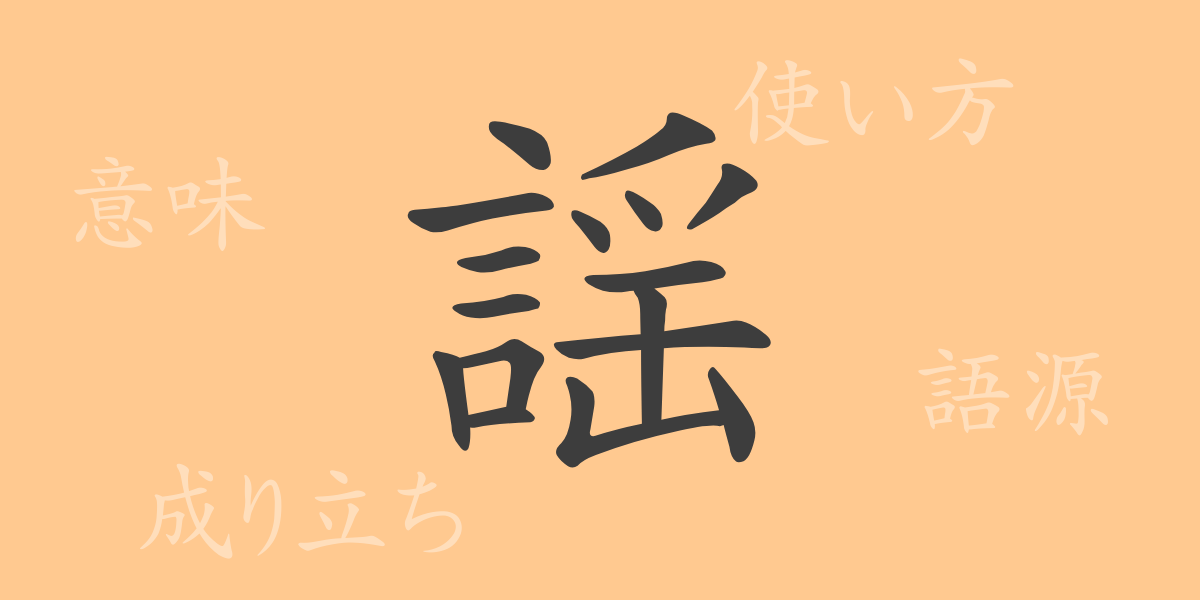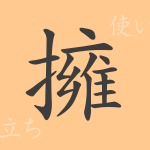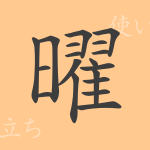Japanese culture is rich with characters that have been passed down through generations. Among them, the kanji “謡” (yō) is especially known for its deep connection to traditional Japanese performing arts. This article delves into the origins, meanings, uses, and even the reading, stroke count, and radicals of “謡” (yō). Furthermore, we will explore idioms, phrases, and proverbs used in everyday life that feature this beautiful kanji, revealing the rich world of expression it holds.
Origins of 謡 (yō)
The origin of “謡” (yō) traces back to ancient China. Initially, it meant “to recite” and referred to the act of reading poetry aloud. Over time, this kanji became associated with music and dance, and in Japan, it specifically refers to the songs used in traditional performing arts such as Noh and Kyogen. Thus, “謡” (yō) not only retains its original meaning of reciting poetry but also encompasses musical elements and connections to stage arts.
Meaning and Usage of 謡 (yō)
Generally, “謡” (yō) is used as a term related to songs. Specifically, it refers to the unique melodies sung in traditional arts like Noh and Kyogen. In a broader sense, it can also denote the act of reciting poetry or songs with poetic elements. As a verb, “謡う” (utau), it is commonly used in phrases like “古典を謡う” (kotten o utau) meaning “to chant classics” or “心を込めて謡う” (kokoro o komete utau) meaning “to sing with heart.”
Reading, Stroke Count, and Radicals of 謡 (yō)
Focusing on the reading and components of the kanji “謡” (yō) can provide a deeper understanding.
- Reading: The On’yomi (音読み) reading is “ヨウ” (yō), and the Kun’yomi (訓読み) reading is “うた.う” (utau).
- Stroke Count: The kanji “謡” (yō) consists of 16 strokes.
- Radical: The radical is 言 (げん, gen), which indicates a relation to words or speech.
Idioms, Phrases, and Proverbs Featuring 謡 (yō)
Idioms, phrases, and proverbs that include “謡” (yō) are well-rooted in the Japanese language. For example, “謡曲” (ヨウキョク, yōkyoku) refers to the songs used in Noh and Kyogen, and “謡声” (ヨウセイ, yōsei) describes a beautiful singing voice or its resonance. The proverb “百謡声” (ひゃくようせい, hyakuyōsei) depicts the scene of many beautiful voices coming together, often used to express a harmonious atmosphere.
Summary of 謡 (yō)
The kanji “謡” (yō) not only represents a crucial element in traditional Japanese performing arts but also symbolizes artistic expressions such as poetry and songs. From its origins and uses to idioms and proverbs, this versatile kanji showcases the depth and richness of Japanese culture. The presence of “謡” (yō) continues to live on in our language, conveying the beauty of Japanese tradition and artistry.

























